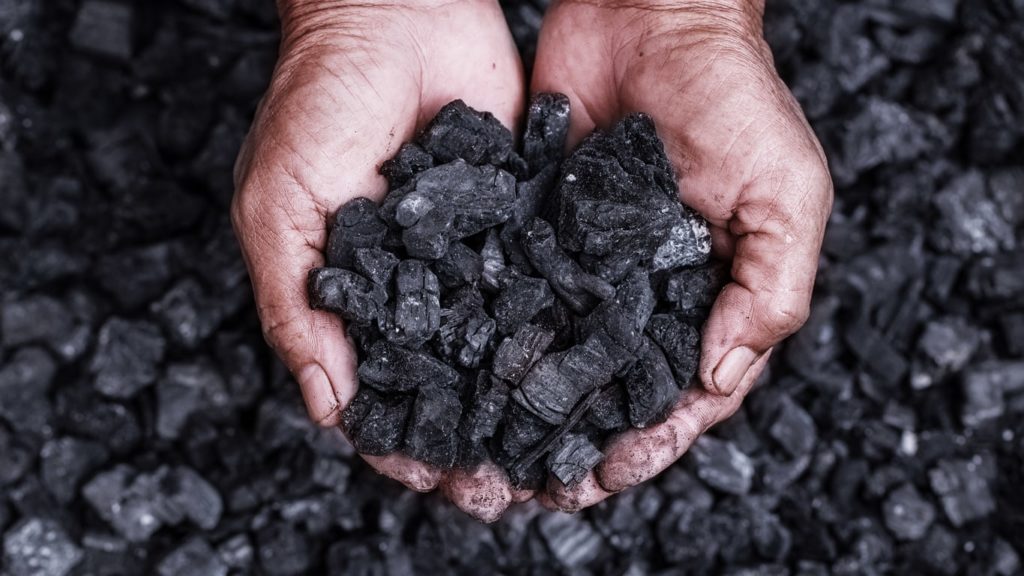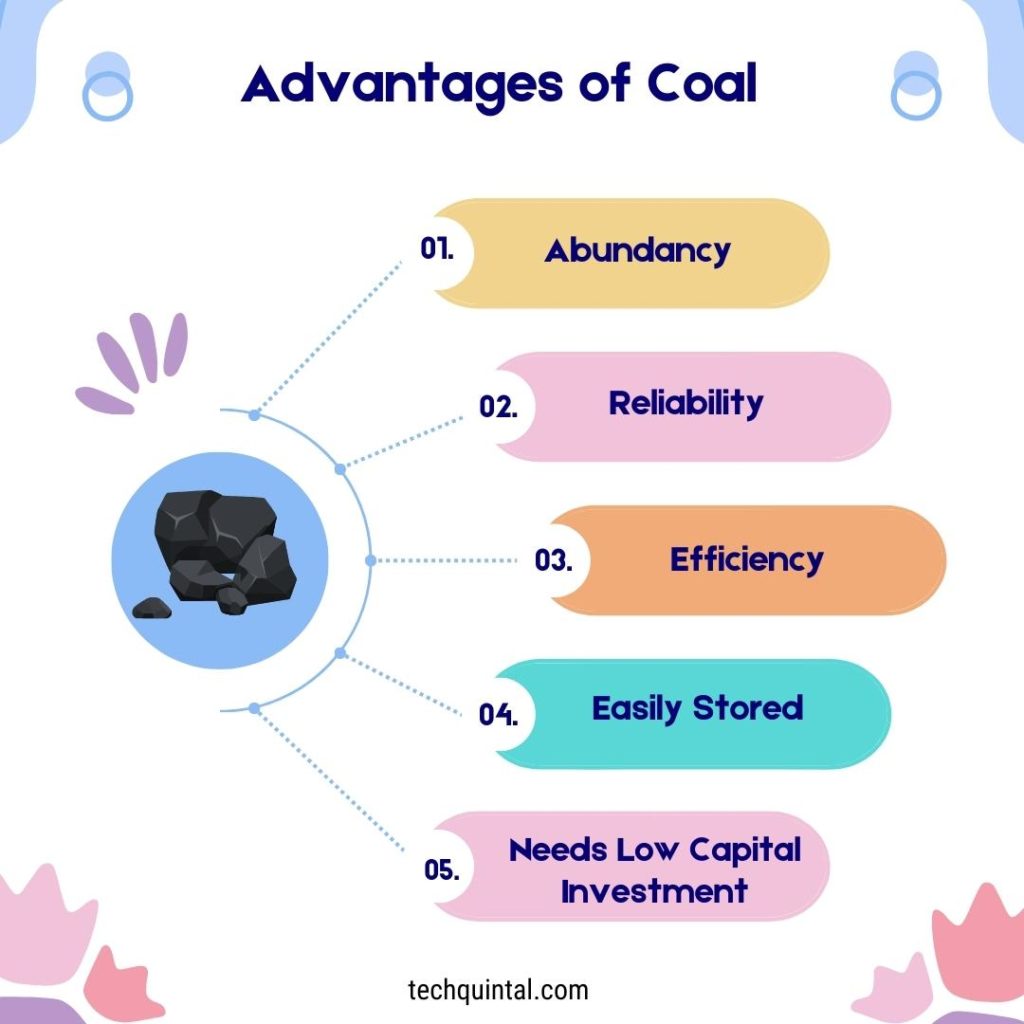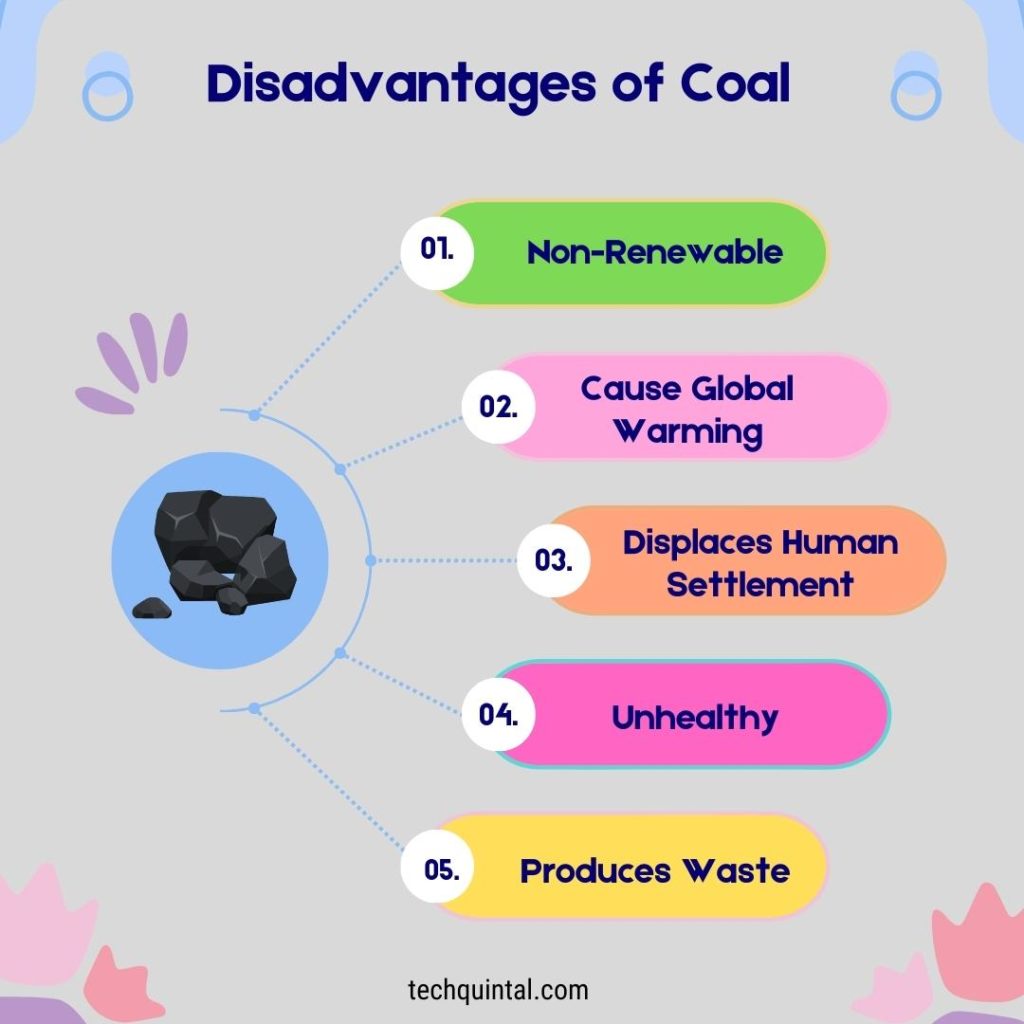
Coal is the remains of dead plants heated over 100-400 million years ago. It is a non-renewable resource and considering it takes millions of years to form, we will run out of its finite supply. The coal is brought from below the ground through surface or underground mining. Broadly speaking, there are four types of coals: lignite, anthracite, bituminous, and sub-bituminous. Also, the major reserves are in countries such as the United States, Russia, Australia, China, and India. That brings us neatly to the advantages and disadvantages coal use has.
What are the Uses of Coal?
Coal is primarily utilized as a fuel to generate electric power and is inexpensive. However, the emissions resulting from coal combustion are harmful. That’s why we are reconsidering its position in the modern world aiming for sustainability.
Here are some more uses of coal:
- Coal powers our homes and cities through electricity generation.
- It’s a key ingredient in crafting strong and durable steel.
- It helps make the cement that goes into our buildings and bridges.
- Industries rely on coal for process heat in making paper, chemicals, and aluminum.
- Some folks still use coal to keep their homes warm during chilly winters.
- By transforming coal, we can create synthetic gas and liquids used as fuels or chemical ingredients.
- Carbon fiber, which is super strong and light, can be made using coal.
- We use coal to make activated carbon for purifying our water and air.
- Plus, some types of coal even contain rare earth elements essential for high-tech gadgets!
Once again, in this analysis, we will look at the pros and cons of coal in depth.
Advantages of coal

Coal is used for centuries as it is highly versatile. The following are some of the other benefits of coal:
1. Its supply is in abundance
The coal reserves are around 1.06 trillion tonnes globally. That’s how abundant the coal supply is. Also, 36% of the world’s electricity comes from it. Thus, if the consumption continues at the current rate, then it will be sufficient for the next 400 years. This timeframe is enough for the development of its alternative when we run out of coal’s limited supply.
2. Coal is reliable
Coal is a dependable energy source as it does not rely on external factors. The other energy sources such as solar and wind are affected by the fluctuations in the environment. Therefore, coal is used as the energy source for industries that require a reliable power supply. It is not only reliable but also predictable, letting us can easily burn it 24/7 for energy production.
3. It is efficient
The process of generating electricity from coal is fairly simple and highly efficient. Also, it is a stable energy source. Additionally, it is also used in industrial and domestic use. The industries such as cement, pharma, and aluminum use it to manufacture products.
Not only this, it is used as an essential ingredient in specialist products including activated carbon. Plus, coal is a dense fuel that produces more heat per ton, meaning you can burn less coal for a longer duration.
4. Coal is easy to store
We have been using coal for years now, so the technology for its storage is quite advanced. People using coal for domestic purposes can easily store it too. It doesn’t take much space nor does it need additional maintenance.
It can be easily kept in the vicinity of fireplace or storage units for long-term use. This is especially useful in areas where the supply of coal is inconsistent. They can pack coal reserves when it is available in surplus and use them when there is a supply shortage.
5. It requires low capital investments
In modern times, many fuel and power generation technologies make use of coal. This dramatically reduces the need for huge buys, eliminating costs associated with creating resources. Also, the low upfront capital investment required for generating energy from coal makes it an attractive option. Consequently, the cost of power from coal is also affordable.
Disadvantages of coal

In recent years, coal has been portrayed in a negative light, and that’s for a few reasons tied to its downsides. These are the disadvantages of coal:
1. It is a non-renewable resource
Even though we have an abundance of coal reserves currently, it will still get depleted in a few centuries if we keep using it at this rate. The finite supply of coal makes it a resource that must be replaced upon its depletion. Globally, various industries are dependent on coal for electricity and power supply.
These industries will have a hard time when a shortage occurs. Also, some regions have massive coal reserves while others don’t. The regions with limited coal reserves should focus on implementing backup systems for accepting other forms of energy.
2. Coal damages the environment
We are facing global warming issues and one of the major contributors to this is carbon dioxide emissions. When compared to natural gas, coal produces twice the carbon dioxide per unit of electricity. Coal emissions also contribute to pollution and climate change. Additionally, coal combustion produces nitrogen oxides and sulfuric acid that further leads to acidic rain. This in turn damages the infrastructure of the affected area.
The mining of coal also damages the natural habitat. The coal reserves are found in natural landscapes that are inhabited by wildlife. Even though the landscape is restored after extracting coal, there is irreversible damage done to the habitat of plants and animals. In other words, it disrupts the harmony of the affected area.
3. It displaces human settlement
When coal reserves are found in human settlements, they are forced to vacate the place. Their existing houses are lost in the mining process. Also, the area near coal mining is not inhabitable as the pollution is harmful. Once the mining is complete, the area remains much more damaged even after restoration efforts. This makes the affected area inhospitable to humans.
4. Coal is harmful to health
It’s not just the environment that is negatively affected by coal, but also humans. The health consequences are both direct and indirect. The coal miners wear protective equipment, but that’s not enough.
They are directly affected by coal when working with it. It puts them at risk of lung cancer, congestive heart failure, respiratory diseases, and nervous system damage. Dust particles are also carried by the wind to the nearby areas, hence resulting in the same life-threatening consequences.
5. It produces massive waste
Coal combustion creates enormous waste annually. It also contains radioactive materials that concentrate in fly ash, bottom ash, and boiler slag during combustion.
After the coal is burned in the power plants, most of the coal ash is recycled, but vast amounts are still discarded into landfills and ash ponds. From there, the toxic chemicals and waste seep into water bodies, contributing to premature mortality. To sum up, coal is harmful from mining to combustion.
Additional Advantages and Disadvantages of Coal
| Advantages of Coal | Disadvantages of Coal |
|---|---|
| 1. Abundant supply | 1. Environmental pollution |
| 2. Low cost | 2. Not renewable |
| 3. Easy to burn | 3. Health hazards |
| 4. High energy density | 4. Climate change impact |
| 5. Infrastructure exists | 5. Mining destruction |
| 6. Constant power | 6. Non-sustainable |
| 7. Job creation | 7. Carbon emissions |
| 8. Reliable energy source | 8. Hazardous waste generation |
| 9. Supports grid reliability | 9. Water usage |
| 10. Industrial usage | 10. Land degradation |
| 11. Suitable for base load | 11. Risky mining conditions |
| 12. Fuel flexibility | 12. Acid rain causing |
| 13. Independent of weather | 13. Fossil fuel dependence |
| 14. Can be stored easily | 14. Limited reserves |
| 15. Supports heavy industries | 15. Transportation costs |
| 16. Technology matured | 16. Releases toxic substances |
| 17. Power plants longevity | 17. Contributes to global warming |
| 18. Can be converted to gas | 18. Dangerous extraction process |
| 19. Can be used with existing infrastructure | 19. Destructive mining practices |
| 20. Source of rare earth elements | 20. Risk of coal mine methane |